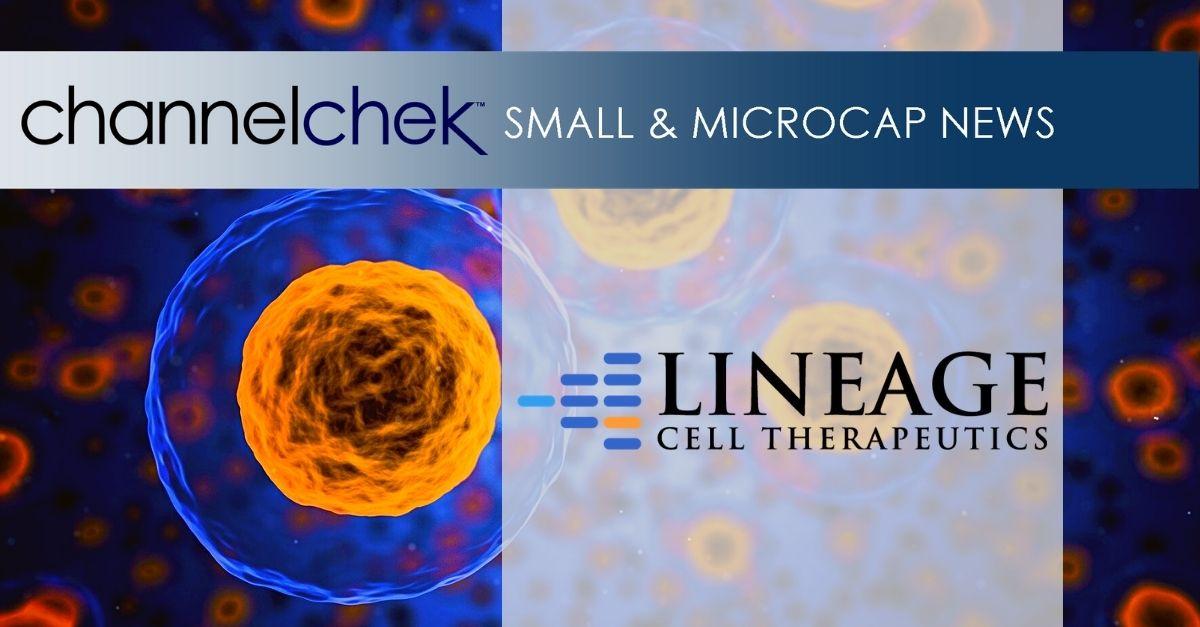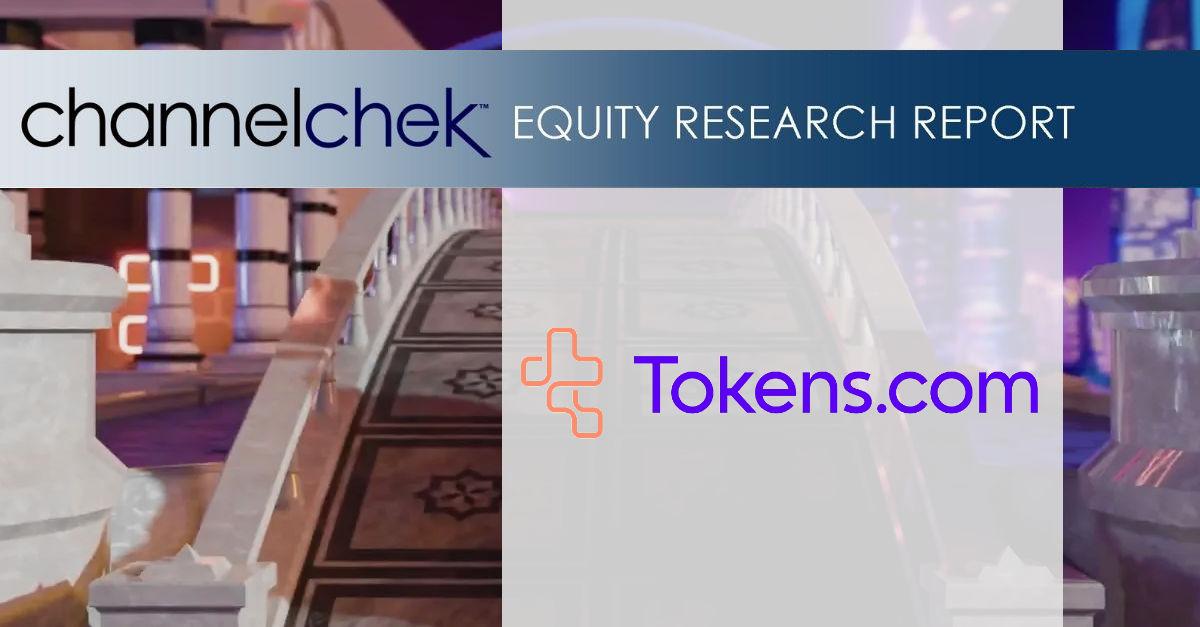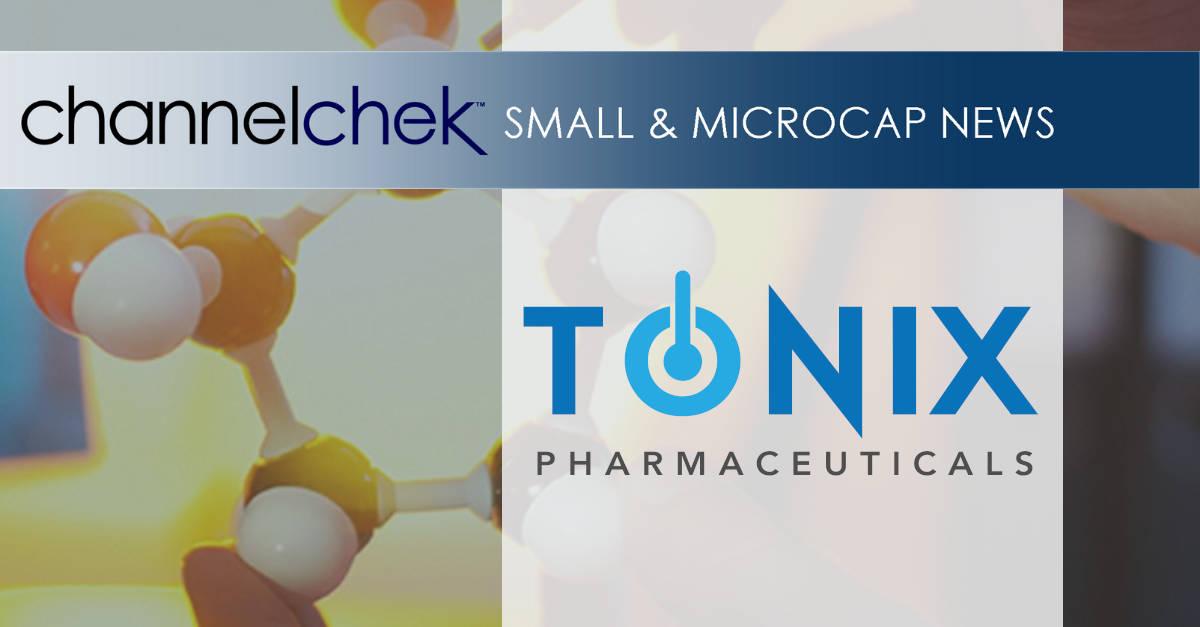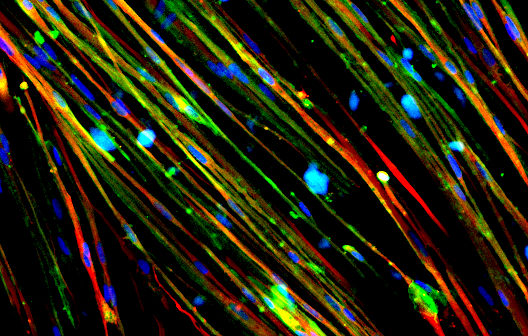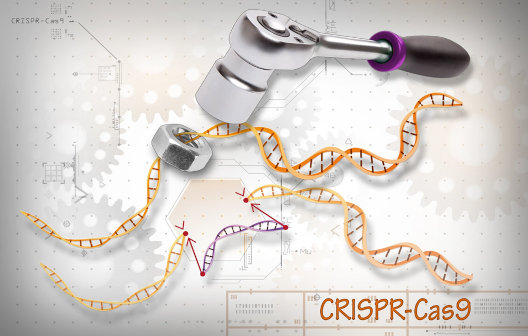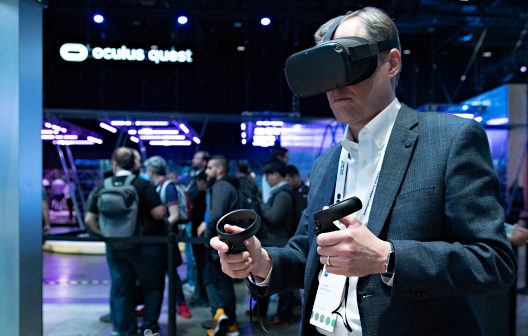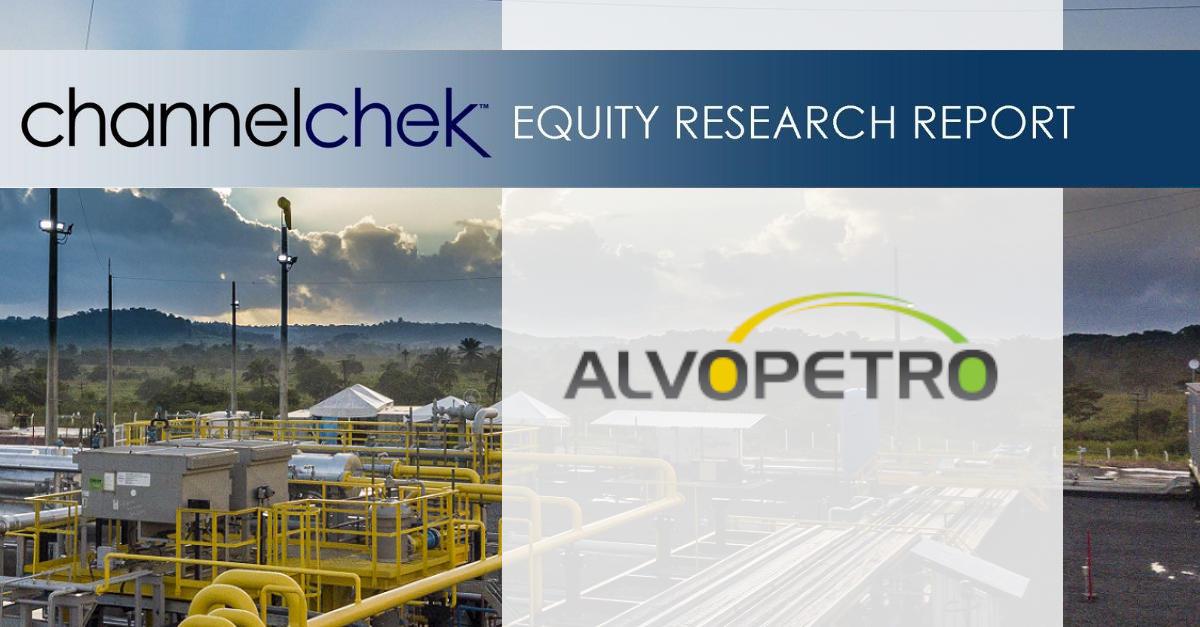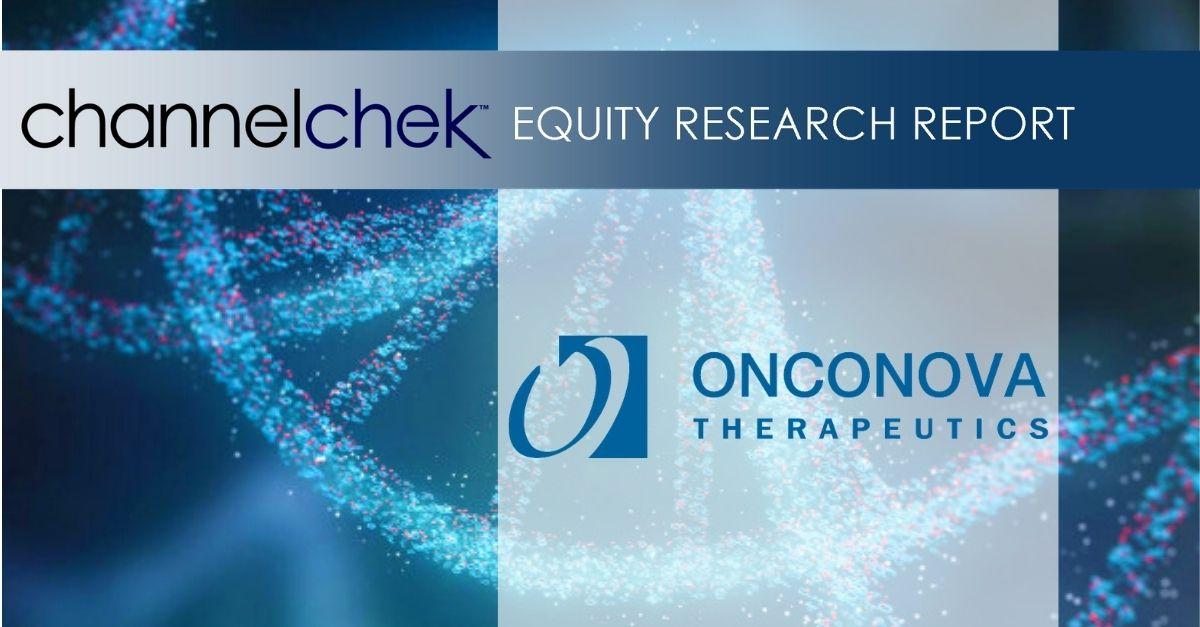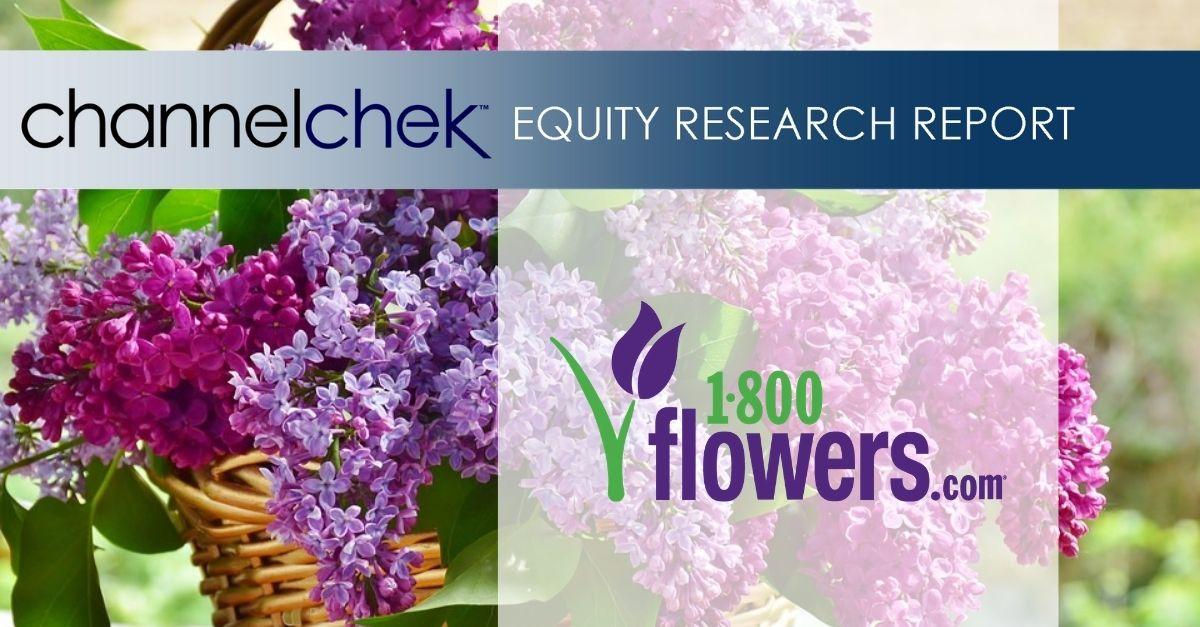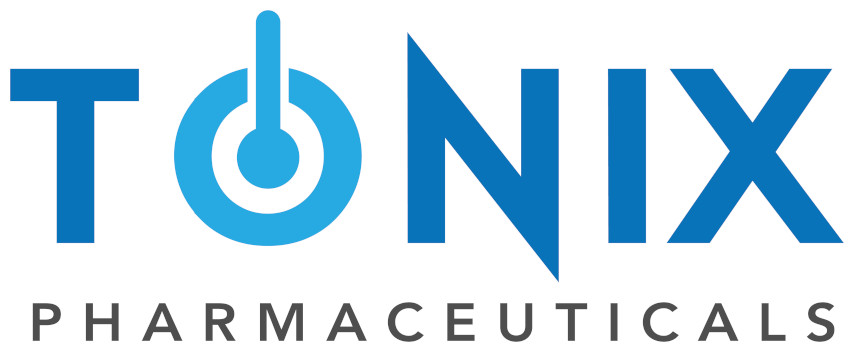
Tonix Pharmaceuticals Announces Phase 3 RALLY Study Results for TNX-102 SL 5.6 mg for the Management of Fibromyalgia
Research, News, and Market Data on Tonix Pharmaceuticals
As Expected Based on Interim Analysis Results Reported in July 2021, TNX-102 SL Did Not Achieve Statistical Significance Over Placebo on the Primary Endpoint of Reduction in Daily Pain in RALLY Study
Relative to the Previous Positive Phase 3 Study (RELIEF), RALLY had an Unexpected Increase in Study Participant Adverse Event-Related Discontinuations in both Drug and Placebo Groups
TNX-102 SL Generally Well Tolerated with Overall Adverse Event Profile Comparable to Prior Studies; No New Safety Signals Observed
Confirmatory Phase 3 Study RESILIENT for the Management of Fibromyalgia Planning to Enroll Participants Imminently
CHATHAM, N.J., March 21, 2022 (GLOBE NEWSWIRE) — Tonix Pharmaceuticals Holding Corp. (Nasdaq: TNXP) (Tonix or the Company), a clinical-stage biopharmaceutical company, today announced that, as expected based on previously reported pre-specified interim analysis results, TNX-102 SL (cyclobenzaprine HCl sublingual tablets)1 did not achieve statistical significance on the primary endpoint of reducing fibromyalgia (FM) daily pain at Week 14 compared to placebo (p=0.115) in the Phase 3 RALLY study. RALLY was a 14-week randomized, double-blind, placebo-controlled trial of TNX-102 SL 5.6 mg, in which 514 participants with FM were randomized in a 1:1 ratio across 36 U.S. sites. All participants received TNX-102 SL 2.8 mg or placebo for the first two weeks, which was increased to TNX-102 SL 5.6 mg (2 x 2.8 mg tablets) or two placebo tablets for the remaining 12 weeks. Tonix reported interim analysis results of RALLY in July 2021 at which time the Independent Data Monitoring Committee recommended stopping the study as it was unlikely to succeed on the primary endpoint for the planned full sample. The Company therefore stopped enrollment of new participants while continuing those enrolled at that time to completion.
TNX-102 SL is in mid-Phase 3 development for the management of fibromyalgia. In December 2020, Tonix reported positive results from the Phase 3 RELIEF study of TNX-102 SL 5.6 mg for the management of FM (primary endpoint, p=0.010). FM is a pain disorder characterized by chronic widespread pain, non-restorative sleep, fatigue, and impaired cognition. Approximately one-fourth of FM patients resort to prescription opioids for analgesia2. TNX-102 SL is a centrally acting analgesic that has the potential to be a new non-addictive, non-opioid bedtime medication for the management of FM. Cyclobenzaprine, the active ingredient of TNX-102 SL, has no recognized potential for addiction.
“The positive outcome of the earlier RELIEF study stands in contrast to the missed primary endpoint in RALLY,” said Dr. Gregory Sullivan, M.D., Chief Medical Officer of Tonix. “We believe the difference between these study results may be driven in large part by a 79% increase in adverse event-related participant discontinuations in the drug treatment group in RALLY as compared to RELIEF. Similarly, a 77% increase of adverse event-related participant discontinuations was observed in the placebo group in RALLY as compared to RELIEF.” (Table 1)
| Table 1. Increases in AE-Related Discontinuations in RALLY Compared with RELIEF in Both Placebo and TNX-102 SL Groups |
| |
RALLY (F306) |
RELIEF (F304) |
RALLY (F306) |
RELIEF (F304) |
| |
Placebo |
TNX-102 SL |
| Patients with at least one TEAE leading to early discontinuation |
6.2 |
% |
3.5 |
% |
15.2 |
% |
8.5 |
% |
| Ratio of patients with at least one TEAE leading to early discontinuation in F306 to F304 (F306/F304) |
1.77 |
1.79 |
TEAE = treatment-emergent adverse event
The missing data for the primary and secondary endpoints were imputed by a method called ‘multiple imputation’ (MI), and discontinuations due to adverse events can negatively impact the statistical outcome when using this approach. Since 2010, The U.S. Food and Drug Administration (FDA) has generally required MI be used to account for missing data in efficacy analyses. Table 2 illustrates how the higher discontinuation rates due to adverse events attenuate the p-values of RALLY using the MI approach.
Table 2: Comparisons of Analytic Methods on Primary and Secondary Endpoints at Week 14 Between the RALLY and RELIEF Phase 3 Studies of TNX-102 SL 5.6 mg in Fibromyalgia
| |
RALLY (F306) |
| |
MMRM+MI* |
MMRM** |
| Endpoints |
LSMD (SE) |
p-value |
LSMD (SE) |
p-value |
| Pain by Diary |
-0.2 (0.16) |
0.115# |
-0.4 (0.16) |
0.014 |
| FIQR Symptom domain |
-1.9 (1.52) |
0.216 |
-3.4 (1.55) |
0.030 |
| FIQR Function domain |
-0.4 (1.46) |
0.797 |
-1.6 (1.48) |
0.266 |
| PROMIS Sleep Disturbance |
-2.3 (0.80) |
0.004 |
-3.3 (0.73) |
<0.001 |
| PROMIS Fatigue |
-1.2 (0.74) |
0.101 |
-2.0 (0.73) |
0.007 |
| Sleep Quality by Diary |
-0.3 (0.16) |
0.094 |
-0.4 (0.16) |
0.008 |
| |
RELIEF (F304) |
| |
MMRM+MI* |
MMRM** |
| Endpoints |
LSMD (SE) |
p-value |
LSMD (SE) |
p-value |
| Pain by Diary |
-0.4 (0.16) |
0.010# |
-0.5 (0.16) |
0.004 |
| FIQR Symptom domain |
-4.3 (1.60) |
0.007 |
-5.6 (1.60) |
<0.001 |
| FIQR Function domain |
-4.4 (1.69) |
0.009 |
-5.2 (1.63) |
0.001 |
| PROMIS Sleep Disturbance |
-2.9 (0.82) |
<0.001 |
-3.3 (0.82) |
<0.001 |
| PROMIS Fatigue |
-1.8 (0.76) |
0.018 |
-2.1 (0.79) |
0.007 |
| Sleep Quality by Diary |
-0.6 (0.17) |
<0.001 |
-0.7 (0.17) |
<0.001 |
FIQR = Fibromyalgia Impact Questionnaire-Revised; LSMD = least squares mean difference
(between TNX-102 SL and placebo); MMRM = mixed model repeated measures; MI = multiple imputation;
PROMIS = Patient-Reported Outcomes Measurement Information System; SE = standard error
* MMRM with MI was the pre-specified primary analysis
**MMRM without MI was a pre-specified analysis
# Primary efficacy endpoint: change from baseline in the weekly average of daily diary pain severity numerical rating scale scores
Dr. Sullivan continued, “When the data are analyzed without MI, the results of RALLY appear consistent with the previous RELIEF study. The mixed model repeated measures (MMRM) results without MI method are presented to illustrate the impact of the increased discontinuations on the results when using MI as the primary analytic approach. At this time, the anticipated analytic approach for the upcoming Phase 3 RESILIENT study is MMRM with MI.”
“Without knowing the precise reasons, we postulate the increased rate of adverse event-related discontinuations may be related to conducting the study during the peak phase of the COVID-19 pandemic in the U.S., during which time vaccines were being rolled out,” said Dr. Seth Lederman, M.D., Chief Executive Officer of Tonix. “Since the pandemic phase of COVID-19 appears to be transitioning to an endemic phase, we believe that starting the new RESILIENT Phase 3 study imminently is justified based on the expectation that rates of adverse event-related discontinuations will return toward the levels of RELIEF and our PTSD studies. We are grateful to the individuals who participated in the RALLY study, and to their families, particularly because of the many challenges presented by different phases of the COVID-19 pandemic.”
“Tonix remains dedicated to improving the lives of the millions suffering from fibromyalgia,” Dr. Lederman continued. “FM is a complex syndrome, and while TNX-102 SL at 5.6 mg missed the primary endpoint in RALLY, it continued to show strong activity on sleep disturbance (p=0.004) and on the Patient Global Impression of Change (PGIC; p=0.038), which is a patient-reported assessment of overall improvement during the trial. These findings and our general understanding of TNX-102 SL tolerability encourage us to move forward with our plans to initiate our new F307 RESILIENT Phase 3 study for fibromyalgia in the first half of 2022.”
1TNX-102 SL is an investigational new drug and has not been approved for any indication.
2Sarmento, CVM, et al. “Opioid prescription patterns among patients with fibromyalgia.” J Opioid Manag. 2019;15(6):469-477. doi: 10.5055/jom.2019.0537. PMID: 31850508; https://pubmed.ncbi.nlm.nih.gov/31850508/
EFFICACY RESULTS OF THE PHASE 3 RALLY STUDY
The RALLY study missed statistical significance on the primary efficacy endpoint: change from baseline to Week 14 in the weekly average of daily diary pain severity numerical rating scale (NRS) scores for TNX-102 SL 5.6 mg (LS mean [SE]: -1.6 [0.11] units) versus placebo (-1.3 [0.11] units), analyzed by mixed model repeated measures with multiple imputation (MMRM+MI) (LS mean difference [SE]: -0.2 [0.16] units, p=0.115, Table 2).
Key secondary endpoint results
The responder analysis of PGIC was nominally significant (Pearson’s Chi-square test; difference in proportions [95% CI]: 8.0% [0.5%, 15.5%]; p=0.038), with a greater proportion of responders (rating of “very much improved” or “much improved” at Week 14) receiving TNX-102 SL (29.7%) compared to placebo (21.7%).
Consistent with the proposed mechanism that TNX-102 SL acts in FM through improving sleep quality, TNX-102 SL achieved nominal significance on the PROMIS Sleep Disturbance measure (LS mean difference [SE]: -2.3 [0.80] units; p=0.004). As shown in Table 2, other key secondary endpoints did not achieve nominal significance, including the Fibromyalgia Impact Questionnaire–Revised (FIQR) Symptom and Function domains, the PROMIS Fatigue instrument, and the daily sleep quality diary.
SAFETY RESULTS OF THE PHASE 3 RALLY STUDY
In the RALLY study, TNX-102 SL 5.6 mg was well tolerated. There were no new safety signals observed. Among participants randomized to the drug treatment and placebo groups, 73.8% and 81.4%, respectively, completed the 14-week dosing period. As expected, based on prior TNX-102 SL studies, oral administration site reactions were higher in the drug treatment group, including rates of tongue/mouth numbness, pain/discomfort of tongue/mouth, and product taste abnormal (typically a transient bitter aftertaste) (Table 3). Tongue/mouth numbness or tingling and product aftertaste were local effects nearly always temporally related to dose administration and transiently expressed (<60 minutes) in most occurrences. Adverse events resulted in premature study discontinuation in 15.2% of those who received TNX-102 SL compared with 6.2% of placebo recipients. Approximately 95% of adverse events in both the drug treatment and placebo groups were rated as mild or moderate. There were a total of six serious adverse events (SAEs) in the drug treatment group, none of which were deemed related to investigational product.
Table 3. Treatment-Emergent Adverse Events at Rate of 3% or Greater in TNX-102 SL Group in RALLY
| Oral Cavity or Systemic Adverse Events |
TNX-102 SL (N=256)
|
Placebo (N=258)
|
| Preferred Term |
| Oral Cavity Adverse Events |
|
|
| Hypoaesthesia oral |
72 (28.1%) |
2 (0.8%) |
| Product taste abnormal |
26 (10.2%) |
2 (0.8%) |
| Oral discomfort |
23 (9.0%) |
2 (0.8%) |
| Tongue discomfort |
16 (6.3%) |
2 (0.8%) |
| Paraesthesia oral |
11 (4.3%) |
0 (0.0%) |
| Dry mouth |
10 (3.9%) |
6 (2.3%) |
| Oral pain |
8 (3.1%) |
0 (0.0%) |
| Systemic Adverse Events |
|
|
| Headache |
12 (4.7%) |
11 (4.3%) |
| Somnolence |
12 (4.7%) |
2 (0.8%) |
| Sedation |
10 (3.9%) |
2 (0.8%) |
| Fatigue |
8 (3.1%) |
1 (0.4%) |
| COVID-19 |
8 (3.1%) |
7 (2.7%) |
About Fibromyalgia
Fibromyalgia is a chronic pain disorder that is understood to result from amplified sensory and pain signaling within the central nervous system. Fibromyalgia afflicts an estimated 6-12 million adults in the U.S., approximately 90% of whom are women. Symptoms of fibromyalgia include chronic widespread pain, nonrestorative sleep, fatigue, and morning stiffness. Other associated symptoms include cognitive dysfunction and mood disturbances, including anxiety and depression. Individuals suffering from fibromyalgia struggle with their daily activities, have impaired quality of life, and frequently are disabled. Physicians and patients report common dissatisfaction with currently marketed products.
About TNX-102 SL
TNX-102 SL is a patented sublingual tablet formulation of cyclobenzaprine hydrochloride which provides rapid transmucosal absorption and reduced production of a long half-life active metabolite, norcyclobenzaprine, due to bypass of first-pass hepatic metabolism. As a multifunctional agent with potent binding and antagonist activities at the serotonin-2A, alpha-1 adrenergic, histamine-H1, and muscarinic-M1 receptors, TNX-102 SL is in development as a daily bedtime treatment for fibromyalgia, PTSD, Long COVID (PASC), alcohol use disorder and agitation in Alzheimer’s disease. The United States Patent and Trademark Office (USPTO) issued United States Patent No. 9636408 in May 2017, Patent No. 9956188 in May 2018, Patent No. 10117936 in November 2018, Patent No. 10,357,465 in July 2019, and Patent No. 10736859 in August 2020. The Protectic™ protective eutectic and Angstro-Technology™ formulation claimed in the patent are important elements of Tonix’s proprietary TNX-102 SL composition. These patents are expected to provide TNX-102 SL, upon NDA approval, with U.S. market exclusivity until 2034/2035.
About the Phase 3 RALLY Study
The RALLY study was a double-blind, randomized, placebo-controlled trial designed to evaluate the efficacy and safety of TNX-102 SL (cyclobenzaprine HCl sublingual tablets). The two-arm trial enrolled 514 participants across 36 U.S. sites. For the first two weeks of treatment, there was a run-in period in which participants started on TNX-102 SL 2.8 mg (1 tablet) or placebo. After the first two weeks, all participants had the dose increased to TNX-102 SL 5.6 mg (2 x 2.8 mg tablets) or two placebo tablets for 12 weeks. The primary endpoint was daily diary pain severity score change (TNX-102 SL 5.6 mg vs. placebo) from baseline to Week 14 (using the weekly averages of the daily numerical rating scale scores), analyzed by mixed model repeated measures with multiple imputation. An interim analysis by an Independent Data Monitoring Committee was conducted on the primary endpoint based on the first 50% of enrolled participants.
The first interim cohort of the study was enrolled between September 2020 and March 2021, which included the periods of the second and third waves of the COVID-19 pandemic in US. The post-interim cohort was enrolled between third week of March and last week of July 2021. At the time of the interim analysis in July 2021, there were 125 participants still active in the study, who all completed their participation by 1 November 2021.
About Tonix Pharmaceuticals Holding Corp.
Tonix is a clinical-stage biopharmaceutical company focused on discovering, licensing, acquiring and developing therapeutics and diagnostics to treat and prevent human disease and alleviate suffering. Tonix’s portfolio is composed of immunology, central nervous system (CNS) and infectious disease product candidates. The Company’s CNS portfolio includes both small molecules and biologics to treat pain, neurologic, psychiatric and addiction conditions. Tonix’s lead CNS candidate, TNX-102 SL2, (cyclobenzaprine HCl sublingual tablets), is a small molecule drug in mid-Phase 3 development for the management of fibromyalgia, with a new Phase 3 study expected to start in the first half of 2022. TNX-102 SL is also being developed to treat Long COVID, a chronic post-COVID-19 condition. Tonix expects to initiate a Phase 2 study in Long COVID in the first half of 2022. TNX-13003 is a biologic designed to treat cocaine intoxication that is expected to start a Phase 2 trial in the first half of 2022. Tonix’s immunology portfolio includes biologics to address organ transplant rejection, autoimmunity and cancer. Tonix’s lead immunology candidate, TNX-15001, is a humanized monoclonal antibody targeting CD40 ligand being developed for the prevention of allograft rejection and the treatment of autoimmune diseases. A Phase 1 study of TNX-1500 is expected to start in the second half of 2022. Tonix’s infectious disease pipeline includes a vaccine in development to prevent smallpox, next-generation vaccines to prevent COVID-19 and an antiviral to treat COVID-19. Tonix’s lead vaccine program is TNX-801 (live horsepox virus for percutaneous administration) for preventing smallpox and monkeypox4. Horsepox is also the basis for Tonix’s recombinant pox vaccine (RPV) platform. Tonix’s lead vaccine candidates for COVID-19, TNX-1840 and TNX-18505, are live virus vaccines in development based on the RPV platform. Finally, TNX-35006 (sangivamycin, i.v. solution) is a small molecule antiviral drug to treat acute COVID-19 and is in the pre-IND stage of development.
1TNX-1500 is an investigational new biologic at the pre-IND stage of development and has not been approved for any indication.
2TNX-102 SL is an investigational new drug and has not been approved for any indication.
3TNX-1300 is an investigational new biologic and has not been approved for any indication.
4TNX-801 is an investigational new biologic at the pre-IND stage of development and has not been approved for any indication.
5TNX-1840 and TNX-1850 are investigational new biologics at the pre-IND stage of development and have not been approved for any indication. TNX-1840 and TNX-1850 are designed to express the spike protein of SARS-CoV-2 from omicron and BA.2 variants, respectively, based on the experience from TNX-1800, which expresses the spike protein from the ancestral Wuhan strain.
6TNX-3500 is an investigational new drug at the pre-IND stage of development and has not been approved for any indication.
This press release and further information about Tonix can be found at www.tonixpharma.com.
Forward-Looking Statements
Certain statements in this press release are forward-looking within the meaning of the Private Securities Litigation Reform Act of 1995. These statements may be identified by the use of forward-looking words such as “anticipate,” “believe,” “forecast,” “estimate,” “expect,” and “intend,” among others. These forward-looking statements are based on Tonix’s current expectations and actual results could differ materially. There are a number of factors that could cause actual events to differ materially from those indicated by such forward-looking statements. These factors include, but are not limited to, risks related to the development of TNX-102 SL; the failure to obtain FDA clearances or approvals and noncompliance with FDA regulations; delays and uncertainties caused by the global COVID-19 pandemic; risks related to the timing and progress of clinical development of our product candidates; our need for additional financing; uncertainties of patent protection and litigation; uncertainties of government or third party payor reimbursement; limited research and development efforts and dependence upon third parties; and substantial competition. As with any pharmaceutical under development, there are significant risks in the development, regulatory approval and commercialization of new products. Tonix does not undertake an obligation to update or revise any forward-looking statement. Investors should read the risk factors set forth in the Annual Report on Form 10-K for the year ended December 31, 2021, as filed with the Securities and Exchange Commission (the “SEC”) on March 14, 2022, and periodic reports filed with the SEC on or after the date thereof. All of Tonix’s forward-looking statements are expressly qualified by all such risk factors and other cautionary statements. The information set forth herein speaks only as of the date thereof.
Contacts
Jessica Morris (corporate)
Tonix Pharmaceuticals
investor.relations@tonixpharma.com
(862) 799-8599
Olipriya Das, Ph.D. (media)
Russo Partners
olipriya.das@russopartnersllc.com
(646) 942-5588
Peter Vozzo (investors)
ICR Westwicke
peter.vozzo@westwicke.com
(443) 213-0505
Source: Tonix Pharmaceuticals Holding Corp.


